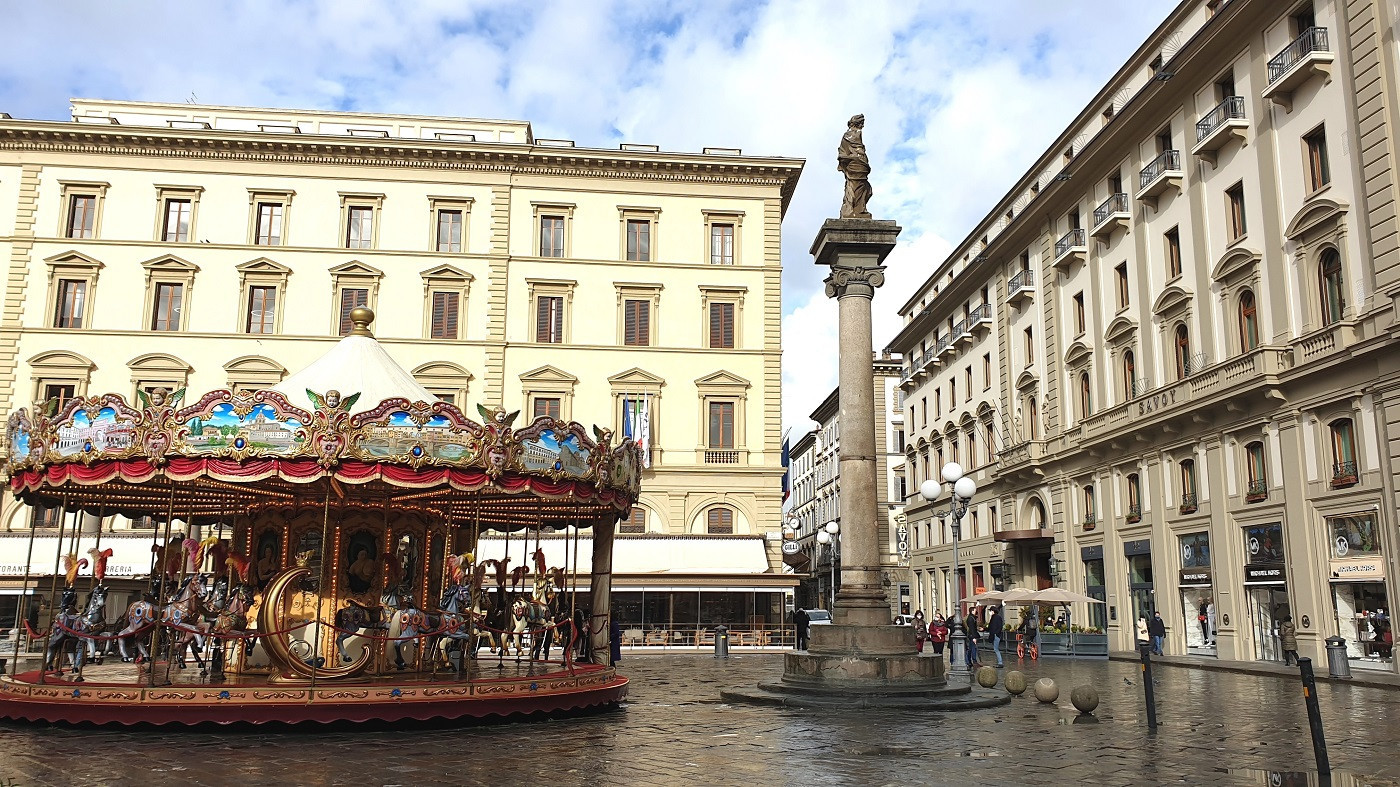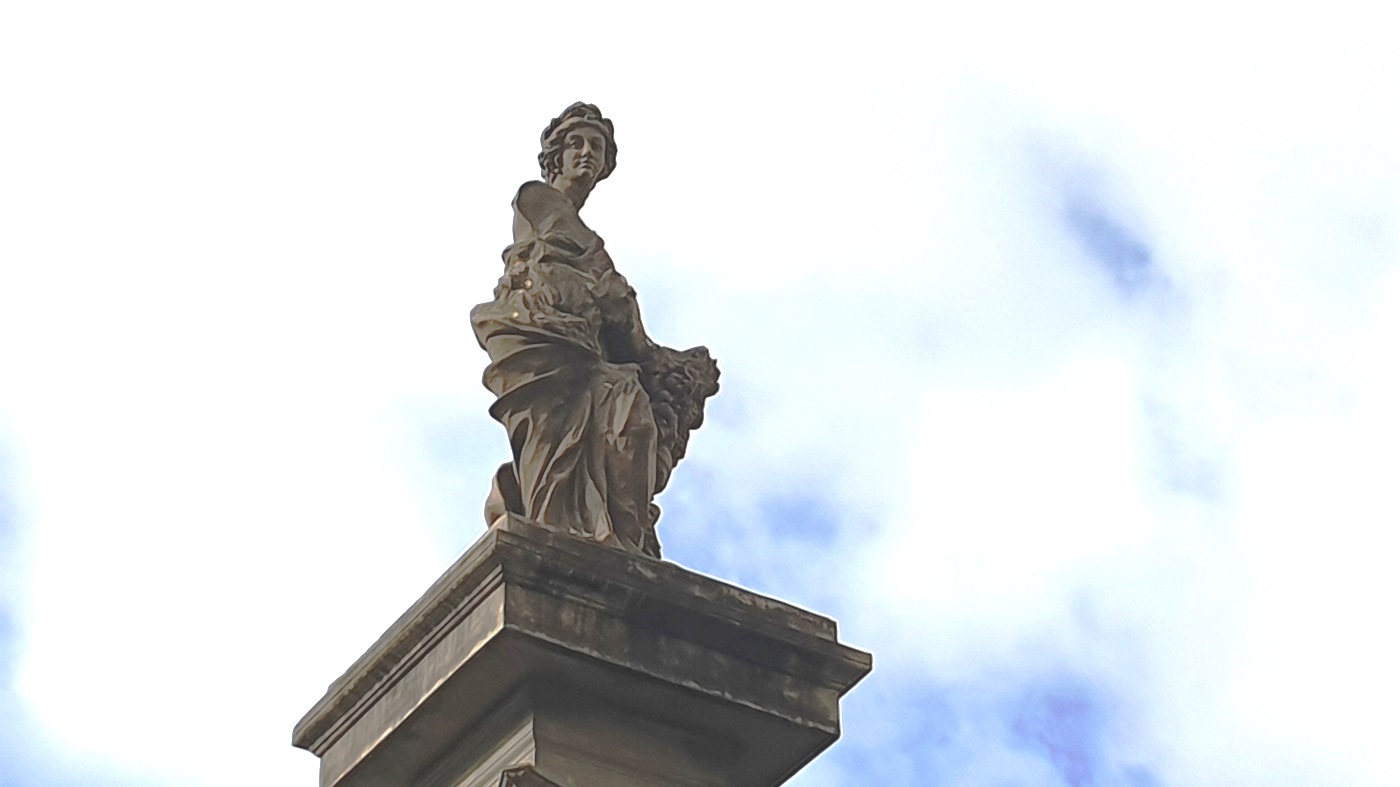
The belly button of Florence - The Column of Abundance and its long history
Not all cities have a "belly button", an exact
center marked by a column, but Florence does. It is the Column of Abundance in
Piazza della Repubblica.
Florence was founded by the Romans in 59 BC and all
the surrounding land assigned to the veterans of Julius Caesar as a reward for the end of their service. When building a city, the Romans first chose its center, on the basis
of religious but also rational considerations. They called it “umbilicus urbi” (belly button of the
city) and from there they drew two perpendicular lines, the decumanus from south to north and the cardo from east to west. From this basis
they started tracing, in a very geometric way, the urban blocks up to the city walls,
then the squares that delimited the fields in the countryside, in this case
assigned to the veterans. The Romans, obsessed with symmetry, always used to
build cities as military camps. They were rational, cruel and very organized.
This was their strength, the moment they changed, they lost everything.
In Florence, that central point was marked by a column even in Roman times, but the original was lost in the Middle Ages. In 1431, when the square became the central market of the city, another column was erected. made out of
precious Elba granite (a volcanic stone, actually solidified lava). At its top was placed a pietra serena statue by the great Donatello representing the Dovizia or Abundance: a female figure holding a cornucopia, the
horn full of fruit and flowers, symbol of fertility and wealth. However, the pietra
serena, though beautiful to look at, is not suitable for outdoor
structures as it flakes and crumbles because of bad weather. In fact, in 1721 the
statue fell, it shattered and was replaced by a new one of the same kind, sculpted
by Giovan Battista Foggini, the most fashionable artist at the time.
Between 1885 and 1895, during the urban transformation of the
area and the relocation of the market, the column was dismantled and put in a warehouse, because it
disturbed the gigantic monument of King Vittorio Emanuele II on horseback,
which was placed in the square center. It was not until 1956 - after Italy
had become a republic and the statue of the king evicted and relocated to the
suburbs - that the column was reassembled and a copy of the statue placed at its top. However, it was put about two meters further from its original place, so as not to obstruct traffic.
There were no pedestrian or limited traffic areas back then, and cars, buses, trams,
trucks, etc., used to drive through Piazza della Repubblica. Perhaps the arbitrary relocation of this sacred marking place brought bad luck to the city? In 1980,
for safety reasons, the statue was replaced with a copy in fiberglass, basically plastic. In 2012, a piece of the Corinthian capital weighing 80 kg
collapsed to the ground, shattering. Luckily it was raining and no one was
sitting at the base of the column! Another restoration followed, hopefully it will be definitive this
time.
A curiosity. On the column there are still two iron circles:
the one at the top held a bell that indicated the beginning and end of the activity
of the surrounding market; the one at the bottom was where dishonest traders, swindlers
and insolvent debtors were chained so that they could be identified, mocked and
insulted by people. The Florentines liked these public punishments (see La pietra dell'acculata), as they believed that this public celebration, marking the guilty for life, was able to educate them and those who mocked
them. Of course this was true for minor offenses, for all the others there was the hangman. Those
were the times.

The statue of Dovizia or Abundance in fiberglass



